|
Earth’s temperatures are getting warmer. In fact, sixteen of the seventeen hottest years on record have occurred since the year 2000. These warmer temperatures are driving larger, long-term changes in our planet’s weather and climate. Scientists refer to these changes as “climate change.” In a few places, climate change might be welcome, but around the world, warmer temperatures and other changes are leading to a host of problems from rising sea levels to more extreme weather events and the spread of harmful human diseases. Professor Scott Mills, from the University of Montana, wanted to see how climate change might be affecting one particular animal called the snowshoe hare. Snowshoe hares live in regions of North America that receive snow every winter. The hares, in fact, change their coat color from brown to white and back again every year. This helps camouflage them against their background—and hides them from the eyes of lynx, owls, and other hungry predators. Here’s the thing: snowshoe hares can’t choose when they molt, or change their coat color. Molt timing is controlled by their genes, which are part of the DNA inside their bodies. If a hare’s genes make it molt to white in October, but snow doesn’t fall until December, the hare will stick out like a light bulb against the brown earth. And that’s a problem. Why? Because almost everywhere on earth, the length of time with snow on the ground is growing shorter and shorter. To find out if shorter winters might harm hare populations, Scott and his team spent three years tagging and following hares. They measured how many were born, how many died, and what they died from. They also recorded whether the hares were matched or mismatched against their backgrounds. They discovered that predators killed mismatched hares significantly more often than hares whose coats match their backgrounds. Scott and his team also calculated that over the next one hundred years, this greater mortality, or death rate, could lead to the decline or disappearance of many snowshoe hare populations. The good news? Different hares molt at different times. This may help some hare populations adapt to shorter winters and longer periods without snow. Hares are not the only animals affected by shorter winters. More than twenty species of animals including lemmings, weasels, hamsters, and Arctic foxes change their coat colors every year. Scott’s research helps us predict what might happen to these animals—and decide what we can do to protect them. Scott’s discoveries about Montana snowshoe hares, together with experts’ predictions about our future climate, indicate that hares will be mismatched between 5-½ and 10 weeks by the end of this century. Before tagging and putting a radio collar on a snowshoe hare, Professor Mills and his team must weigh and measure it. This snowshoe hare has been tagged and fitted with a radio collar—and is now ready to help scientists learn more about snowshoe hare survival. Even from a great distance, a mismatched hare stands out like a glowing light bulb. (Photo Courtesy of L. Scott Mills research laboratory) Besides serving as popular prey for predators, snowshoe hares are irresistibly cute. This is a young hare, also called a leveret. 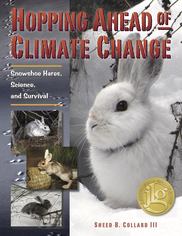 Sneed B. Collard III is the author of more than eighty award-winning books, many focusing on science and the natural world. His entertaining memoir Snakes, Alligators, and Broken Hearts—Journeys of a Biologist’s Son recounts his challenges and adventures growing up as the son of divorced biologist parents, and the experiences that would one day lay the foundation for his writing career. He is a dynamic speaker and offers school and conference programs that combine science, nature, and literacy. To learn more about him and his talks, visit his website, www.sneedbcollardiii.com. This book was reviewed by Vicki Cobb in the Huffington Post: "The Cheeseburger of the Forest". MLA 8 Citation
Collard, Sneed B., III. "Hopping Ahead of Climate Change." Nonfiction Minute, iNK Think Tank, 15 Nov. 2017, www.nonfictionminute.org/hopping-ahead-of-climate-change.
0 Comments
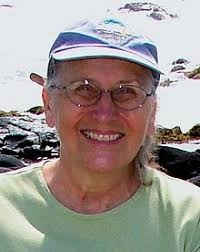 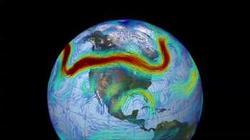 The polar jet stream can travel at speeds greater than 100 miles per hour (160 km/h). Here, the fastest winds are colored red; slower winds are blue. NASA/Goddard Space Flight Center The polar jet stream can travel at speeds greater than 100 miles per hour (160 km/h). Here, the fastest winds are colored red; slower winds are blue. NASA/Goddard Space Flight Center No one can honestly deny that our climate has been changing in recent years. Before the winter of 2018-2019, California had only a year’s water supply stored in its reservoirs. Wildfires have become an annual threat throughout much of the west, while the Midwest and East Coast have experienced record-setting winters. These problems are due to complex interactions among temperature, winds, and water currents. A major change is the warming of the atmosphere. The earth’s atmosphere has been getting warmer since the late 1800s, when factories started spewing out carbon dioxide. Because natural variations also affect the temperature, a graph showing the temperature over time is a jagged line. But the trend is consistently upward and follows the graph of increasing carbon dioxide in the atmosphere due to human activities. That’s strong enough evidence that we are at least a large part of the problem, and the vast majority of climate scientists are urging countries of the world to reduce their carbon dioxide emissions. A major player in the world’s weather is the jet stream, which helps circulate the atmosphere around the world about every two weeks. This flow of fast-moving air speeds across North America from west to east, separating cold arctic air from warmer, more southerly air. The jet stream used to run in a fairly direct arc across the northern United States. But in recent years it has become less stable, dipping southward in the eastern U.S. to bring frigid winters to the Northeast while arching northward in the West, carrying warm, dry air there. Scientists believe that the rapid melting of the Arctic ice brought about by global warming is part of the cause for the jet stream’s instability. However, climate trends are controlled more by the oceans. Scientists estimate 95% of the heat from global warming is being stored in the oceans, increasing water temperatures even into the depths. As global warming continues, so will climate change. The melting of sea ice and glaciers is already raising the sea level. While scientists don’t blame climate change for devastating Hurricane Sandy, Sandy’s extreme coastal flooding was made worse by the increase in sea level that’s already occurred. As time goes on, coastal cities around the world will be at increasing risk for more severe storm damage. Because warm air holds more moisture than cold air, storms are becoming more severe, increasing blizzards and flooding storms. Some agricultural regions that depend on reliable rainfall may soon be unable to grow crops, disrupting the food supply. Climate change is complicated, but because it affects us all, we need to learn about it. The Environment Protection Agency has questions and answers about climate change. 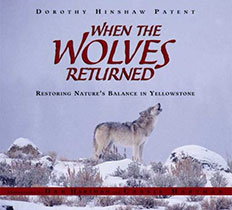 Yellowstone National Park’s majestic geologic wonders and remarkable wildlife draw millions of visitors each year. But there was a time when these natural treasures were in great danger, all because after years of unrestricted hunting, one key piece of the puzzle had been eliminated—the wolf. Now, more than a decade after scientists realized the wolves’ essential role and returned them to Yellowstone, the park’s natural balance is gradually being restored. Dorothy Hinshaw Patent's text supplemented by spectacular full-color photographs show the wolves in the natural habitat that was almost lost without them. Click here to find out more. Dorothy Hinshaw Patent is a member of iNK's Authors on Call and is available for classroom programs through Field Trip Zoom, a terrific technology that requires only a computer, wifi, and a webcam. Click here to find out more. MLA 8 Citation
Patent, Dorothy Hinshaw. "Climate Change: The Facts and the Consequences." Nonfiction Minute, iNK Think Tank, 17 Apr. 2018, www.nonfictionminute.org/the-nonfiction-minute/ Climate-Change-The-Facts-and-the-Consequences. Earth has a problem. The sun creates hot spots over land, in the air and in the water. That’s why there are winds, weather, and currents in the ocean as Earth tries to even out the heat, moving warmer masses of air and water to cooler areas. During hurricane season ( from June 1-November 30), only 10 or 11 of the 80 tropical disturbances off the west coast of Africa (where most of our hurricanes originate) become large enough storms to be given a name. Only two or three of them hit the United States. They are not frequent but they are massive wind storms that can destroy life and property. Do they do anything good at all? As far as the Earth is concerned, these largest of all storms are a safety valve to rapidly move heat that has been accumulating in the oceans up to the stratosphere (from 7 to 31 miles above the Earth’s surface). From there it will be transported through the air to over the North Pole. It’s the way Earth stops a fever. Once a hurricane forms, it must have an ocean surface that is at least 80°F to keep moving and to grow. Under the storm, huge amounts of warm water become water vapor. Warm moist air rapidly rises through the spinning winds of the hurricane, up to the stratosphere. When moist air reaches the frigid (-70°F) stratosphere the water vapor quickly condenses to liquid water (rain) releasing its heat. This heat makes surrounding air molecules move faster forming winds. How do hurricanes cool off the oceans? How do they move the heat? Here’s a clue: Wet your finger and wave it in the air. How does it feel? Pretty cool, I bet! That’s because the heat from your finger changes liquid water into water vapor (a gas) as your finger dries. Water vapor molecules store this extra heat. They rise because they are lighter than other air molecules. So, a hurricane is a heat engine that moves water vapor from the ocean’s surface high enough to condense back into liquid water and release heat safely to the stratosphere forming rivers of wind that move it to the poles. Scientists predict that global warming will increase the number and the power of the hurricanes as the ocean surfaces become increasingly warmer during our summers. 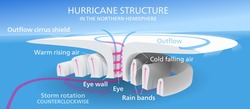 This diagram of the anatomy of a hurricane shows the direction of the winds. The blue represents cold air descending while the pink shows warm moist air rising. The outflow surface clouds form as water condenses into a "table-top" cloud, releasing heat that becomes wind. Kelvinsong via Wikimedia Hurricane Isabel (2003) as seen from orbit during Expedition 7 of the International Space Station. The eye, eyewall, and surrounding rainbands, all characteristics of hurricanes, are clearly visible in this view from space. Image courtesy of Mike Trenchard, Earth Sciences & Image Analysis Laboratory, NASA Johnson Space Center 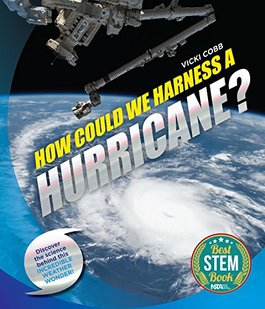 Vicki Cobb's How Could We Harness a Hurricane? offers questions and provides new points of view that may just change peoples' thinking by showing young readers the work scientists and engineers are doing to avoid future disasters. The book includes hands-on experiments that make science fun, be it at home or in the classroom. Here's a link to the book' s Trailer. How Could We Harness a Hurricane was named a 2018 Best STEM Book K-12 by the National Science Teachers Association and the Children's Book Council. Vicki is a member of iNK's Authors on Call so you can invite her to your classroom via iNK's videoconferening Zoom Room. Click here to find out more: MLA 8 Citation
Cobb, Vicki. "Earth's Emergency Heat Valve: The Hurricane." Nonfiction Minute, iNK Think Tank, 24 Apr. 2018, www.nonfictionminute.org/ the-nonfiction-minute/Earths-Emergency-Heat-Valve-The-Hurricane. The biggest bang in two thousand years was heard as far as sixteen hundred miles away. It happened in April of 1815, on the island of Sumbawa in the southwest Pacific Ocean, now part of Indonesia. Mount Tambora erupted in an immense volcanic explosion. Seventy-one thousand islanders were killed almost immediately. The big bang began a global cataclysm that sowed the broadest crop of human misery any single earthly event has yielded. Tambora’s eruption hurled millions of tons of ash and sulfur high into the circulating jet-stream, cooling temperatures around the world. It delayed the monsoon rains that were supposed to sustain crops around the Indian Ocean. Floods followed drought along with a deadly surge in the water-borne disease, cholera: tens of millions died of it all along the Ocean’s shores and as far north as Moscow. As the shroud of ash spread north, China’s rice crop failed in cold weather: more millions died. The volcano’s effects reached the higher latitudes of Europe in 1816. Crops were killed by hard frosts in spring and summer. The price of oats and wheat tripled, quadrupled. “Bread Riots” swept through the streets of British and European cities as starving farm families crowded the cities, looking for any kind of work. In North America, hard frosts were recorded in every month of 1816. Late-sown seedling plants were killed as far south as Virginia, where retired President Thomas Jefferson’s crops were destroyed, plunging him into lifelong debt. Snow fell across New England on July 6, 1816, a foot deep in Quebec City, Canada. Steam railroad lines weren’t laid, yet, so grain couldn’t be brought from warmer southern fields. An exodus of failed northern farmers left family homes to populate those milder Midwest prairies. They called this year of famine and disappointment, “Eighteen Hundred and Froze-To-Death.” While millions of the poor starved, wealthy classes of Europe were merely inconvenienced by Tambora’s weather. A privileged group joined the poets Percy Shelley and Lord Byron to “summer” in Switzerland. Storms and cold drove them indoors where they competed to write the best “ghost story.” Percy’s wife Mary Shelley won with Frankenstein. Byron’s personal doctor, John Polidori, also wrote a humdinger: The Vampyre, which was adapted by Bram Stoker decades later as Dracula. Tambora’s chilling effects lasted only three years. Our own challenge of global warming is building more slowly but could be even more troublesome. Tambora’s big bang taught us that we all share cataclysms and weather, even a world away. The 1815 Tambora volcano produced an estimated thirty six cubic miles of exploded rock and ash which showered down in varying depths over land as far away as eight hundred miles to the northwest. But it was the debris that the jet stream carried over Asia, Europe and North America that earned 1816 the title "year without a summer." NASA This photograph depicts the summit caldera of the Mount Tambora volcano more than a hundred years after its massive explosion. A collapse was triggered by the emptying of the magma chamber beneath the volcano as the result of the 1815 eruption. The volcano removed the mountain's estimated thirteen thousand-foot high peak leaving a hollow area 3.7 miles in diameter and thirty-six hundred feet deep. By Tisquesusa via Wikimedia Commons  Adkins' latest book is about the first drive in an automobile. The wife of the inventor took her kids to see their grandparents. Learn more about it here. The author/illustrator is a member of iNK's Authors on Call and is available for classroom programs through Field Trip Zoom, a terrific technology that requires only a computer, wifi, and a webcam. Click here to find out more. 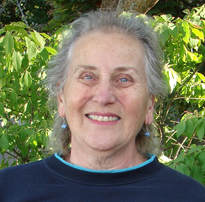 People are confused. They hear the terms “global warming” and “climate change” tossed about without much explanation. We all talk about the weather, but what does that word actually mean, and how does it relate to these other terms? NASA defines global warming: “Global warming is the increase in Earth’s average surface temperature due to rising levels of greenhouse gases.” So global warming is a measurable statistic. Record the temperature at many sites on Earth for a given year, add them up, and divide to get an average. Rising levels of greenhouse gases are also well measured. The famous “Keeling curve” of atmospheric CO2 begun in Hawaii in 1957 is the best example. Climate change is more complicated. Climate change is a long-term change in the Earth’s climate and includes measures of the atmosphere, oceans, land, cryosphere (snow and ice), wind, precipitation, deforestation, wildfire, and more, as well as temperature. So, climate change is a more inclusive measure of many factors changing the Earth system, which is very different from a single statistic like the rise in temperature from global warming. Then there’s the weather. What, exactly is the weather? That term refers to what’s going on in the atmosphere at a particular time and place. It includes the air temperature, wind speed, humidity, and precipitation. Weather happens day to day, while global warming is shown by recording day-to-day temperatures over a long period of time. Climate change is a long-term process that can result in drastic changes in conditions on our planet. To sum up: Weather refers to what’s happening in the atmosphere at a given time and place over the course of days to months. Global warming refers to an upward trend in the average temperature over a period of years to decades. Climate change is a long-term process that can be influenced by changes in the average temperature but includes many other factors. To watch a brief but amazing video of the affect of global warming and climate change over the next 20 years, click here. 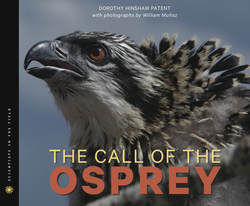 Dorothy's recent book The Call of the Osprey, has been chosen as a Best Science Trade Book for Students by the National Science Teachers Association. It covers research being done in Western Montana by scientists at the University of Montana. Starting in the late 1800's, Butte, MT, at the headwaters of the Clark Fork River, was the largest copper mine in the U.S. The major result of the mining was two-fold—the electrification of America and the largest Superfund cleanup site in the U.S. Call of the Osprey deals not only with current research but also with the history of Butte and the lives of the scientists involved in the research. Click here to find out more. Dorothy Hinshaw Patent is a member of iNK's Authors on Call and is available for classroom programs through Field Trip Zoom, a terrific technology that requires only a computer, wifi, and a webcam. Click here to find out more. MLA 8 Citation
Patent, Dorothy Hinshaw. "Defining Weather, Global Warming, and Climate Change." Nonfiction Minute, iNK Think Tank, 16 Apr. 2018, www.nonfictionminute.org/the-nonfiction-minute/ Defining-Weather-Global-Warming-and-Climate-Change. |
*NEWS
|
For Vicki Cobb's BLOG (nonfiction book reviews, info on education, more), click here: Vicki's Blog
The NCSS-CBC Notable Social Studies Committee is pleased to inform you
that 30 People Who Changed the World has been selected for Notable Social Studies Trade Books for Young People 2018, a cooperative project of the National Council for the Social Studies (NCSS) & the Children’s Book Council
Categories
All
Abolitionists
Adams Janus
Adaptation
Adaptations
Adkins Jan
Advertising
Aerodynamics
Africa
African American History
African Americans
Africa West
Agriculture
Aircraft
Air Pilots
Air Pressure
Air Travel
Albee Sarah
Alchemy
Alligators
Allusion
American History
American Icons
Amphibians
Amundsen Roald
Anatomy
Ancient
Ancient Cultures
Anderson Marian 1897-1993
Animal Behavior
Animal Experimentation
Animal Intelligence
Animals
Animation
Antarctica
Ants
Apache Indians
Apes
April Fool's Day
Architecture
Argument
Arithmetic
Art
Art Deco
Artists
Arts
Asia
Astronauts
Astronomy
Athletes
Atomic Theory
Audubon Societies
Authors
Autobiography
Automobiles
Aviation
Awards
Bacteria
Baseball
Battuta Ibn
Bears
Beatles
Beavers
Bees
Biodegradation
Biography
Biology
Biomes
Biomimicry
Biplanes
Birds
Black Death
Black History
Blindness
Blizzards
Bombs
Bonaparte Napoleon
Boone Daniel
Botany
Brazil
Bridges
Brill Marlene Targ
Brooklyn Bridge
Brown John
Buffaloes
Building Materials
Butterflies
Caesar
Caesar Julius
Caissons
Calculus
Calendars
Cannibal
Capitals
Caravaggio
Carbon Dioxide
Carnivores
Carson Mary Kay
Cartoons & Comics
Carving (Decorative Arts)
Cascade Range
Castaldo Nancy
Castles
Castrovilla Selene
Cathedrals
Cats
Caves
Celts
Cemeteries
Chemistry
Children's Authors
Child Welfare
China
Choctaw Indians
Christmas
Chronometers
Cicadas
Cinco De Mayo
Ciphers
Circle
Citizenship
Civil Rights
Civil Rights Movements
Civil War
Civil War - US
Climate
Climate Change
Clocks And Watches
Clouds
Cobb Vicki
COBOL (Computer Language)
Code And Cipher Stories
Collard III Sneed B.
Collectors And Collecting
Color
Commerce
Communication
Competition
Compilers
Composers
Computers
Congressional Gold Medal
Consitution
Contests
Contraltos
Coolidge Calvin
Cooling
Corms
Corn
Counterfeiters
Covid-19
Crocodiles
Cryptography
Culture
Darwin Charles
Declaration Of Independence
Decomposition
Decompression Sickness
Deep-sea Animals
Deer
De Medici Catherine
Design
Detectives
Dickens Charles
Disasters
Discrimination
Diseases
Disney Walt
DNA
Dogs
Dollar
Dolphins
Douglass Frederick 1818-1895
Droughts
Dr. Suess
Dunphy Madeleine
Ear
Earth
Earthquakes
Ecology
Economics
Ecosystem
Edison Thomas A
Education
Egypt
Eiffel-gustave-18321923
Eiffel-tower
Einstein-albert
Elephants
Elk
Emancipationproclamation
Endangered Species
Endangered-species
Energy
Engineering
England
Englishlanguage-arts
Entomology
Environmental-protection
Environmental-science
Equinox
Erie-canal
Etymology
Europe
European-history
Evolution
Experiments
Explorers
Explosions
Exports
Extinction
Extinction-biology
Eye
Fairs
Fawkes-guy
Federalgovernment
Film
Fires
Fishes
Flight
Floods
Flowers
Flute
Food
Food-chains
Foodpreservation
Foodsupply
Food-supply
Football
Forceandenergy
Force-and-energy
Forensicscienceandmedicine
Forensic Science And Medicine
Fossils
Foundlings
France
Francoprussian-war
Freedom
Freedomofspeech
French-revolution
Friction
Frogs
Frontier
Frontier-and-pioneer-life
Frozenfoods
Fugitiveslaves
Fultonrobert
Galapagos-islands
Galleys
Gametheory
Gaudi-antoni-18521926
Gender
Generals
Genes
Genetics
Geography
Geology
Geometry
Geysers
Ghosts
Giraffe
Glaciers
Glaucoma
Gliders-aeronautics
Global-warming
Gods-goddesses
Gold-mines-and-mining
Government
Grant-ulysses-s
Grasshoppers
Gravity
Great-britain
Great-depression
Greece
Greek-letters
Greenberg Jan
Hair
Halloween
Handel-george-frederic
Harness Cheryl
Harrison-john-16931776
Health-wellness
Hearing
Hearing-aids
Hearst-william-randolph
Henry-iv-king-of-england
Herbivores
Hip Hop
History
History-19th-century
History-france
History-world
Hitler-adolph
Hoaxes
Holidays
Hollihan Kerrie Logan
Homestead-law
Hopper-grace
Horses
Hot Air Balloons
Hot-air-balloons
Housing
Huguenots
Human Body
Hurricanes
Ice
Icebergs
Illustration
Imagery
Imhotep
Imperialism
Indian-code-talkers
Indonesia
Industrialization
Industrial-revolution
Inquisition
Insects
Insulation
Intelligence
Interstatecommerce
Interviewing
Inventions
Inventors
Irrational-numbers
Irrigation
Islands
Jacksonandrew
Jazz
Jeffersonthomas
Jefferson-thomas
Jemisonmae
Jenkins-steve
Jet-stream
Johnsonlyndonb
Jokes
Journalism
Keeling-charles-d
Kennedyjohnf
Kenya
Kidnapping
Kingmartinlutherjr19291968
Kingmartinlutherjr19291968d6528702d6
Kings-and-rulers
Kings Queens
Kings-queens
Koala
Labor
Labor Policy
Lafayette Marie Joseph Paul Yves Roch Gilbert Du Motier Marquis De 17571834
Landscapes
Languages-and-culture
Law-enforcement
Layfayette
Levers
Levinson Cynthia
Lewis And Clark Expedition (1804-1806)
Lewis Edmonia
Liberty
Lift (Aerodynamics)
Light
Lindbergh Charles
Liszt Franz
Literary Devices
Literature
Lizards
Longitude
Louis XIV King Of France
Lumber
Lunar Calendar
Lynching
Macaws
Madison-dolley
Madison-james
Madison-james
Mammals
Maneta-norman
Maneta-norman
Marathon-greece
Marine-biology
Marine-biology
Marines
Marsupials
Martial-arts
Marx-trish
Mass
Massachusetts-maritime-academy
Mass-media
Mastodons
Mathematics
May-day
Mcclafferty-carla-killough
Mcclafferty-carla-killough
Mckinley-william
Measurement
Mechanics
Media-literacy
Media-literacy
Medicine
Memoir
Memorial-day
Metaphor
Meteorology
Mexico
Mickey-mouse
Microscopy
Middle-west
Migration
Military
Miners
Mississippi
Molasses
Monarchy
Monsters
Montgomery
Montgomery-bus-boycott-19551956
Montgomery-heather-l
Monuments
Moon
Moran-thomas
Morsecode
Morsesamuel
Moss-marissa
Moss-marissa
Motion
Motion-pictures
Mummies
Munro-roxie
Munro-roxie
Musclestrength
Museums
Music
Muslims
Mythologygreek
Nanofibers
Nanotechnology
Nathan-amy
Nathan-amy
Nationalfootballleague
Nationalparksandreserves
Nativeamericans
Native-americans
Native-americans
Naturalhistory
Naturalists
Nature
Nauticalcharts
Nauticalinstruments
Navajoindians
Navigation
Navy
Ncaafootball
Nervoussystem
Newdeal19331939
Newman-aline
Newman-aline
Newton-isaac
New-york-city
Nobelprizewinners
Nomads
Nonfictionnarrative
Nutrition
Nylon
Nymphs-insects
Oaths Of Office
Occupations
Ocean
Ocean-liners
Olympics
Omnivores
Optics
Origami
Origin
Orphans
Ottomanempire
Painters
Painting
Paleontology
Pandemic
Paper-airplanes
Parksrosa19132005
Parrots
Passiveresistance
Patent Dorothy Hinshaw
Peerreview
Penguins
Persistence
Personalnarrative
Personification
Pets
Photography
Physics
Pi
Pigeons
Pilots
Pinkertonallan
Pirates
Plague
Plains
Plainsindians
Planets
Plantbreeding
Plants
Plastics
Poaching
Poetry
Poisons
Poland
Police
Political-parties
Pollen
Pollution
Polo-marco
Populism
Portraits
Predation
Predators
Presidentialmedaloffreedom
Presidents
Prey
Prey-predators
Prey-predators
Prime-meridian
Pringle Laurence
Prohibition
Proteins
Protestandsocialmovements
Protestants
Protestsongs
Punishment
Pyramids
Questioning
Radio
Railroad
Rainforests
Rappaport-doreen
Ratio
Reading
Realism
Recipes
Recycling
Refrigerators
Reich-susanna
Religion
Renaissance
Reproduction
Reptiles
Reservoirs
Rheumatoidarthritis
Rhythm-and-blues-music
Rice
Rivers
Roaringtwenties
Roosevelteleanor
Rooseveltfranklind
Roosevelt-franklin-d
Roosevelt-theodore
Running
Russia
Safety
Sanitation
Schwartz David M
Science
Scientificmethod
Scientists
Scottrobert
Sculpture
Sculpturegardens
Sea-level
Seals
Seals-animals
Secretariesofstate
Secretservice
Seeds
Segregation
Segregationineducation
Sensessensation
September11terroristattacks2001
Seuss
Sextant
Shackletonernest
Shawneeindians
Ships
Shortstories
Silkworms
Simple-machines
Singers
Siy Alexandra
Slavery
Smuggling
Snakes
Socialchange
Social-change
Socialjustice
Social-justice
Socialstudies
Social-studies
Social-studies
Sodhouses
Solarsystem
Sound
Southeast-asia
Soybean
Space Travelers
Spain
Speech
Speed
Spiders
Spies
Spiritualssongs
Sports
Sports-history
Sports-science
Spring
Squirrels
Statue-of-liberty
STEM
Storms
Strategy
Sugar
Sumatra
Summer
Superbowl
Surgery
Survival
Swanson-jennifer
Swinburne Stephen R.
Synthetic-drugs
Taiwan
Tardigrada
Tasmania
Tasmanian Devil
Tasmanian-devil
Technology
Tecumsehshawneechief
Telegraph-wireless
Temperature
Tennis
Terrorism
Thomas Peggy
Thompson Laurie Ann
Time
Titanic
Tombs
Tortoises
Towle Sarah
Transcontinental-flights
Transportation
Travel
Trees
Trung Sisters Rebellion
Tundra
Turnips
Turtles
Typhoons
Underground Railroad
Us-environmental-protection-agency
Us History
Us-history
Ushistoryrevolution
Us History Revolution
Us-history-war-of-1812
Us Presidents
Ussupremecourtlandmarkcases
Vacations
Vaccines
Vangoghvincent
Vegetables
Venom
Vietnam
Viruses
Visual-literacy
Volcanoes
Voting-rghts
War
Warne-kate
Warren Andrea
Washington-dc
Washington George
Water
Water-currents
Wax-figures
Weapons
Weather
Weatherford Carole Boston
Whiting Jim
Wildfires
Winds
Windsor-castle
Wolves
Woman In History
Women
Women Airforce Service Pilots
Women-airforce-service-pilots
Womeninhistory
Women In History
Women-in-science
Women's History
Womens-roles-through-history
Wonder
Woodson-carter-godwin-18751950
World-war-i
World War Ii
World-war-ii
Wright Brothers
Writing
Writing-skills
Wwi
Xrays
Yellowstone-national-park
Zaunders Bo
ArchivesMarch 2021
February 2021
January 2021
December 2020
November 2020
October 2020
September 2020
June 2020
May 2020
April 2020
March 2020
February 2020
January 2020
December 2019
October 2019
September 2019
August 2019
July 2019
May 2019
April 2019
March 2019
February 2019
January 2019
December 2018
November 2018
September 2018
June 2018
May 2018
April 2018
March 2018
February 2018
January 2018
December 2017
November 2017
October 2017
September 2017
March 2017
The NONFICTION MINUTE, Authors on Call, and. the iNK Books & Media Store are divisions of iNK THINK TANK INC.
a 501 (c) (3) nonprofit corporation. To return to the iNK Think Tank landing page click the icon or the link below. :
http://inkthinktank.org/
For more information or support, contact thoughts@inkthinktank.org
For Privacy Policy, go to
Privacy Policy
© COPYRIGHT the Nonfiction Minute 2020.
ALL RIGHTS RESERVED.
This site uses cookies to personalize your experience, analyze site usage, and offer tailored promotions. www.youronlinechoices.eu
Remind me later
Archives
March 2023
February 2023
January 2023
December 2022
November 2022
October 2022
September 2022
June 2022
May 2022
April 2022
March 2022
February 2022
January 2022
December 2021
November 2021
September 2021
April 2021
March 2021
February 2021
November 2020
October 2020
September 2020
June 2020
May 2020
April 2020
March 2020
February 2020
January 2020
October 2019
August 2019
July 2019
May 2019
April 2019
December 2018
September 2018
June 2018
May 2018
March 2018
February 2018
January 2018
December 2017
November 2017
October 2017
September 2017

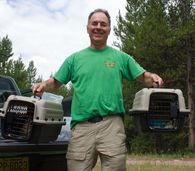

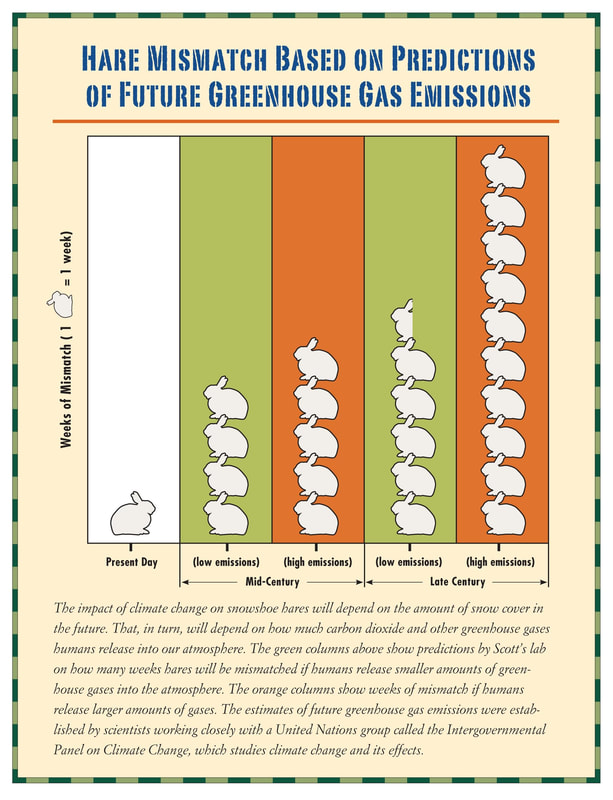
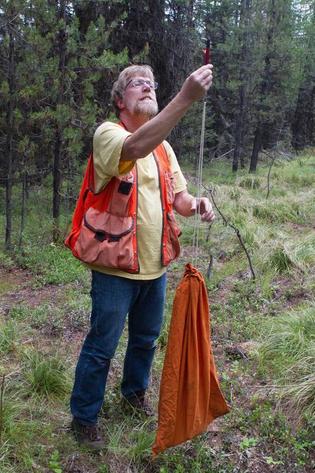
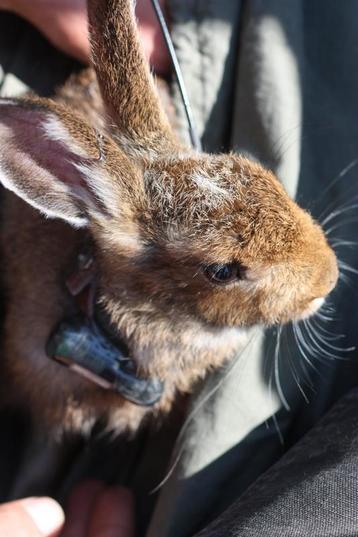
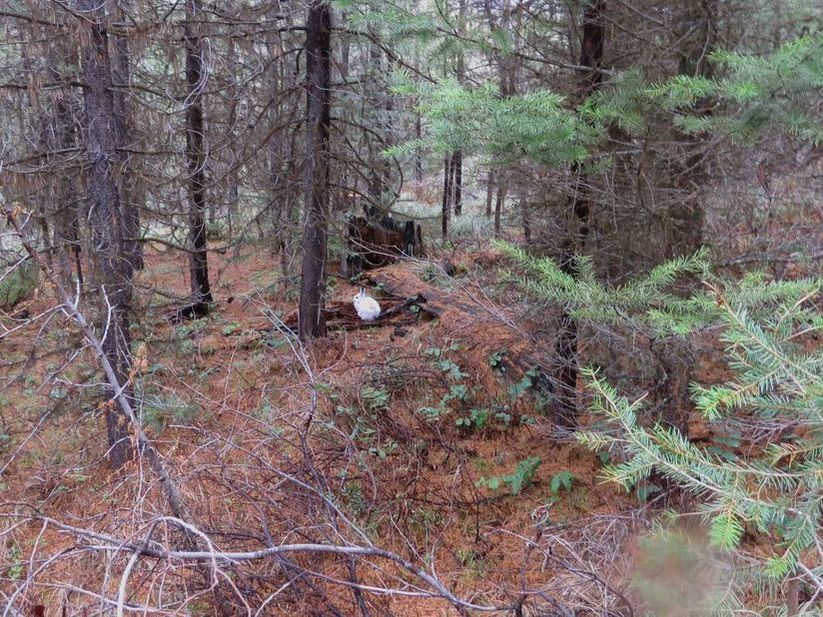
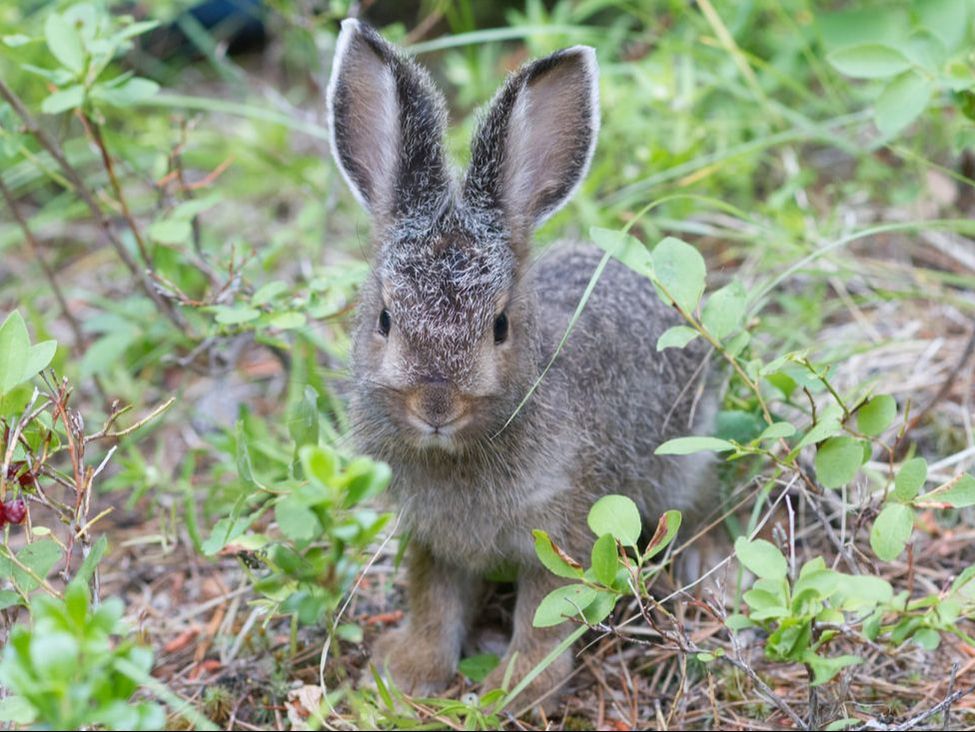


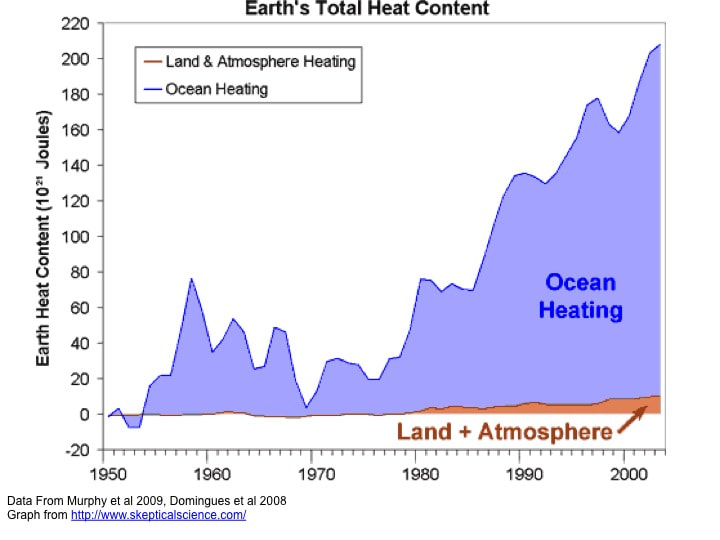

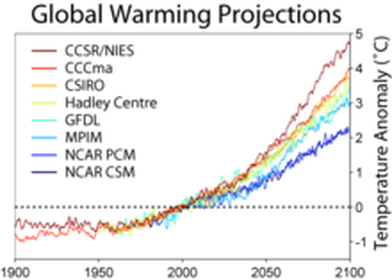

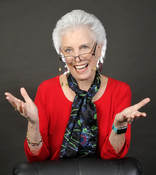


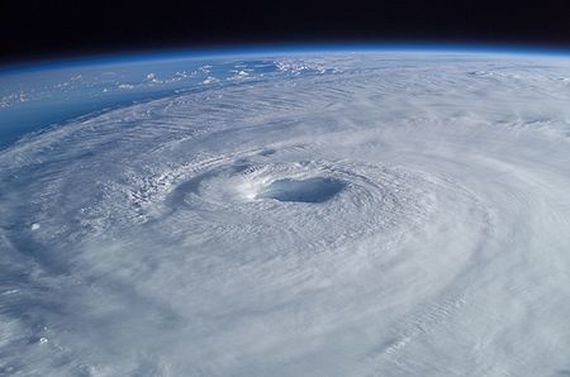

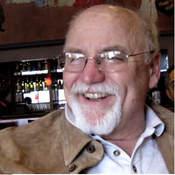

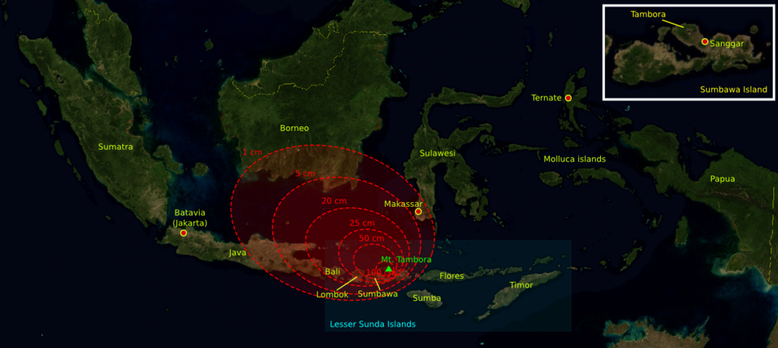



 RSS Feed
RSS Feed
